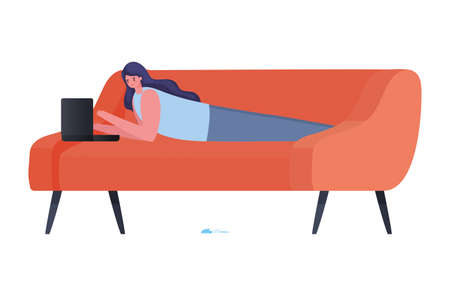The Science Behind Sleep and Healing
When it comes to recovering from any medical treatment, understanding the science behind sleep and healing is crucial. During sleep, your body enters a restorative state where essential repair processes kick into high gear. This includes the release of growth hormones, tissue regeneration, immune system strengthening, and cellular repair. These biological activities are particularly important after surgery, physical therapy, or other clinical interventions, as they help reduce inflammation, speed up wound healing, and restore normal function. In short, quality sleep gives your body the best chance to recover efficiently and effectively. That’s why healthcare professionals often stress the importance of good sleep hygiene as part of a comprehensive post-treatment plan—how you sleep isn’t just about feeling rested; it’s about giving your body the optimal environment to heal itself.
Common Sleeping Positions and Their Impact
After a medical treatment or therapy session, the way you sleep can directly influence your recovery process. In the United States, most people gravitate toward three primary sleeping positions: on the back, on the side, or on the stomach. Each posture offers unique advantages and potential drawbacks when it comes to healing, comfort, and long-term health.
Analyzing Popular Sleep Postures
| Sleeping Position | Potential Benefits for Healing | Possible Drawbacks |
|---|---|---|
| Back (Supine) |
|
|
| Side (Lateral) |
|
|
| Stomach (Prone) |
|
|
Cultural Preferences and Personal Comfort Matter Too
The choice of sleeping position often reflects personal comfort, cultural habits, and individual medical guidance. In American households, side sleeping is notably popular, while health professionals commonly recommend back sleeping for optimal spinal support—unless contraindicated by specific treatments. Ultimately, understanding how each position impacts your body’s ability to heal can empower you to make informed adjustments that foster a smoother recovery process.

3. Sleeping Position Recommendations After Specific Treatments
Choosing the right sleeping position can make a significant difference in your recovery process, especially after medical treatments such as surgery, injuries, or therapeutic procedures. Tailoring your sleep posture to your unique situation helps minimize discomfort, reduce complications, and promote faster healing. Below, we discuss best practices for various scenarios.
Post-Surgical Recovery
After surgery, it’s crucial to avoid positions that put direct pressure on the surgical site. For example, following abdominal or chest surgery, sleeping on your back with a slight incline using pillows can help reduce swelling and ease breathing. For orthopedic surgeries like knee or hip replacements, lying on your back with a pillow between your legs can keep joints aligned and prevent unnecessary strain. Always consult your surgeon for specific instructions tailored to your procedure.
Injury-Related Healing
If you’re recovering from injuries such as sprains, fractures, or muscle tears, sleep posture should support the injured area and reduce movement during the night. For lower limb injuries, elevating the leg with pillows can decrease swelling and improve circulation. If you have a shoulder injury, sleeping on your unaffected side with a pillow supporting the injured arm often provides comfort and stability. Avoid stomach sleeping in most injury scenarios, as it may twist or stress healing tissues.
Therapeutic Recovery (e.g., Physical Therapy)
During periods of therapeutic recovery—such as after chiropractic adjustments or physical therapy sessions—maintaining proper spinal alignment is vital. Sleeping on your back with a supportive pillow under your knees can take pressure off your lower back. Alternatively, side-sleeping with a pillow between your knees helps maintain neutral spine positioning. It’s best to avoid sleeping on very soft mattresses or using oversized pillows that could throw off alignment.
Key Takeaway
Your sleeping position plays an essential role in supporting the healing process following different types of treatments. Consulting with healthcare professionals about recommended sleep postures ensures your rest contributes positively to your recovery journey.
4. Potential Risks of Improper Sleeping Positions
Sleeping in the wrong position after a treatment can seriously disrupt your recovery process. Many people underestimate how much their nighttime posture influences healing, but improper alignment during sleep may actually prolong discomfort and create new issues. Let’s examine some of the most common risks associated with incorrect sleeping positions:
| Risk Factor | Description | Potential Impact |
|---|---|---|
| Poor Circulation | Sleeping in a way that compresses blood vessels or nerves | Swelling, numbness, delayed tissue repair |
| Increased Pain | Pressure on injured or treated areas due to misalignment | Greater sensitivity, muscle spasms, disrupted rest |
| Postural Complications | Habitual poor positioning leading to muscular imbalances | Back/neck pain, headaches, joint stiffness over time |
| Limited Mobility | Lack of support for healing joints or muscles overnight | Stiffness upon waking, slower rehabilitation progress |
| Tissue Strain | Excessive stretching or bending of healing tissues while asleep | Tearing, re-injury, increased inflammation |
Pain Exacerbation and Prolonged Recovery
If you have recently undergone surgery or physical therapy, sleeping on the affected area can intensify soreness and swelling. For example, post-operative shoulder patients who sleep on their side may experience aggravated pain and slower healing. Similarly, improper neck support can worsen headaches and stiffness after chiropractic adjustments.
Development of Chronic Postural Issues
Incorrect sleeping positions aren’t just uncomfortable—they can also trigger chronic problems by encouraging your body to adapt to unhealthy alignments. Over time, this might result in persistent lower back pain or tension in the shoulders and neck, especially if you continue to sleep without proper ergonomic support. These complications often require additional treatments and can make it harder for your body to recover fully from the original issue.
5. Tips for Improving Sleep Quality During Recovery
Prioritize Sleep Hygiene for Better Healing
During recovery after a treatment, optimizing your sleep environment and habits is crucial to maximize your body’s natural healing processes. The way you sleep—including your sleeping position—can influence circulation, reduce inflammation, and minimize discomfort. However, these benefits are best realized when combined with good sleep hygiene practices that align with American cultural norms and lifestyle.
Create a Comfortable and Supportive Sleep Environment
Invest in a quality mattress and pillows that support your recommended sleeping position post-treatment. If your healthcare provider suggests sleeping on your back or side, use pillows to maintain alignment and prevent rolling into positions that could hinder healing. Consider blackout curtains or an eye mask to block out artificial light, as many Americans experience light pollution at night.
Establish a Consistent Bedtime Routine
Americans often have busy, variable schedules, but sticking to a regular sleep-wake cycle helps regulate your body’s internal clock. Aim for 7-9 hours of sleep per night, which research shows is optimal for tissue repair and immune function. Incorporate calming activities like reading, listening to soft music, or practicing mindfulness meditation before bed instead of using electronic devices.
Limit Stimulants and Screen Time Before Bed
Caffeine is a staple in American culture, but consuming coffee, tea, or energy drinks late in the day can disrupt sleep patterns and slow down recovery. Likewise, the blue light from smartphones and TVs can interfere with melatonin production. Try to avoid screens at least an hour before bedtime and opt for relaxing alternatives.
Keep Your Room Cool and Well-Ventilated
A cool room temperature (around 65°F/18°C) is ideal for most people in the U.S., supporting deeper sleep cycles and reducing nighttime awakenings. If you live in a region where seasonal changes impact comfort, use fans, air conditioning, or heating as needed to maintain an optimal sleep climate.
Listen to Your Body and Adjust as Needed
Your comfort level may change as you heal. Don’t hesitate to adapt your sleeping position or introduce additional supports like wedge pillows if you notice pain or swelling. Always consult with your healthcare provider about the best practices specific to your treatment and follow their advice closely.
6. When to Consult a Healthcare Provider
While adjusting your sleeping position can significantly enhance recovery after medical treatments, there are situations where professional guidance is essential. If you experience persistent pain, numbness, tingling, or swelling that does not improve—or worsens—after changing your sleep posture, it’s important to consult a healthcare provider. Post-surgical patients should always follow their surgeon’s or physical therapist’s recommendations regarding optimal sleep positions, especially if there are restrictions on movement or weight-bearing. Additionally, if you notice changes in wound healing, such as increased redness, drainage, or discomfort that correlates with your sleeping position, reach out to your medical team promptly. People recovering from injuries involving the spine, joints, or soft tissues should seek advice before experimenting with new sleeping arrangements to prevent setbacks or complications. In summary, when your symptoms persist despite adjustments, or if you’re unsure about which sleep position best supports your healing process, don’t hesitate to check in with a doctor or physical therapist for tailored recommendations.


